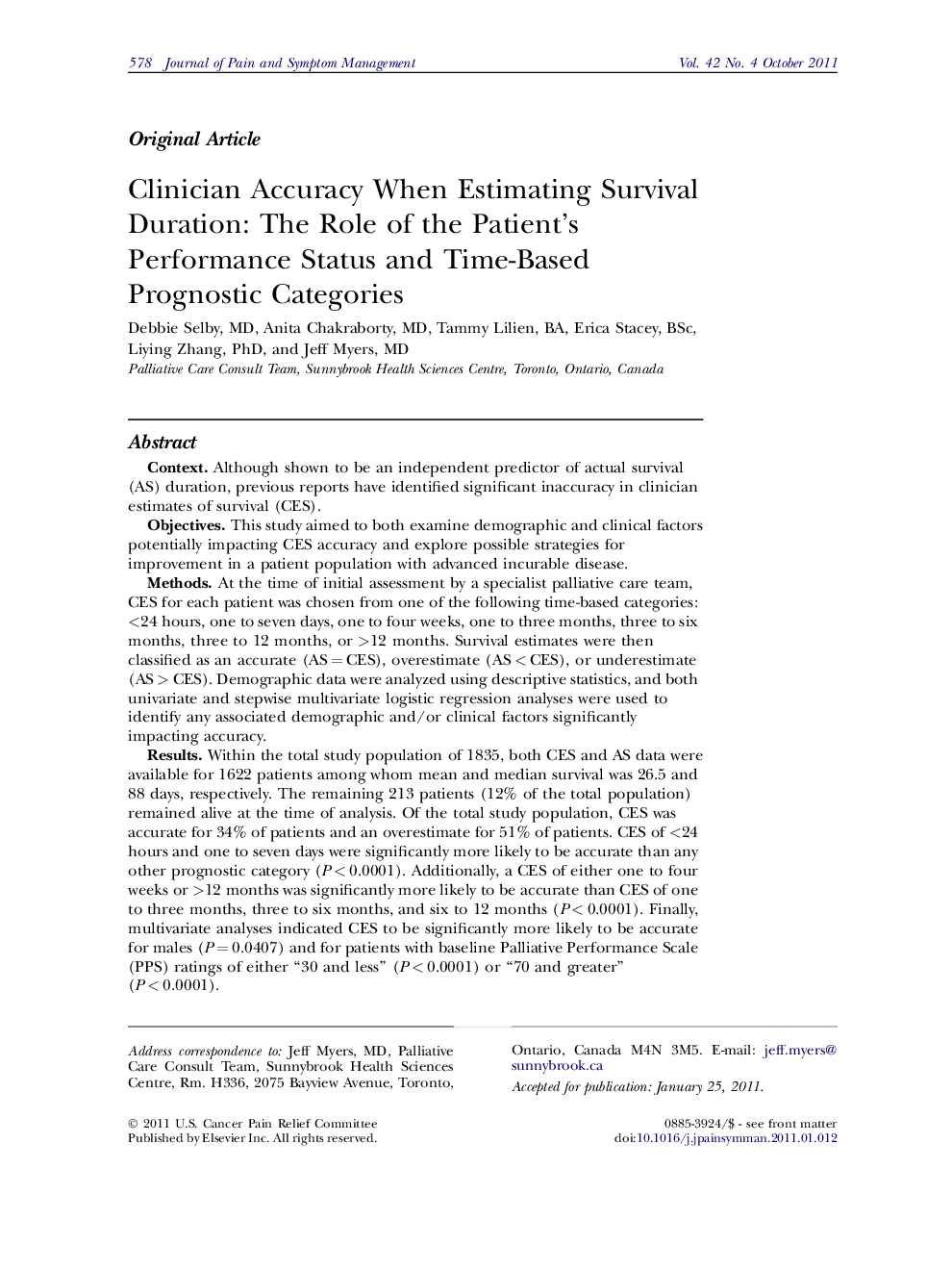| کد مقاله | کد نشریه | سال انتشار | مقاله انگلیسی | نسخه تمام متن |
|---|---|---|---|---|
| 2734546 | 1147670 | 2011 | 11 صفحه PDF | دانلود رایگان |

ContextAlthough shown to be an independent predictor of actual survival (AS) duration, previous reports have identified significant inaccuracy in clinician estimates of survival (CES).ObjectivesThis study aimed to both examine demographic and clinical factors potentially impacting CES accuracy and explore possible strategies for improvement in a patient population with advanced incurable disease.MethodsAt the time of initial assessment by a specialist palliative care team, CES for each patient was chosen from one of the following time-based categories: <24 hours, one to seven days, one to four weeks, one to three months, three to six months, three to 12 months, or >12 months. Survival estimates were then classified as an accurate (AS = CES), overestimate (AS < CES), or underestimate (AS > CES). Demographic data were analyzed using descriptive statistics, and both univariate and stepwise multivariate logistic regression analyses were used to identify any associated demographic and/or clinical factors significantly impacting accuracy.ResultsWithin the total study population of 1835, both CES and AS data were available for 1622 patients among whom mean and median survival was 26.5 and 88 days, respectively. The remaining 213 patients (12% of the total population) remained alive at the time of analysis. Of the total study population, CES was accurate for 34% of patients and an overestimate for 51% of patients. CES of <24 hours and one to seven days were significantly more likely to be accurate than any other prognostic category (P < 0.0001). Additionally, a CES of either one to four weeks or >12 months was significantly more likely to be accurate than CES of one to three months, three to six months, and six to 12 months (P < 0.0001). Finally, multivariate analyses indicated CES to be significantly more likely to be accurate for males (P = 0.0407) and for patients with baseline Palliative Performance Scale (PPS) ratings of either “30 and less” (P < 0.0001) or “70 and greater” (P < 0.0001).ConclusionIn a patient population referred for specialist palliative care consultation with diverse diagnoses and a wide range of CES, time-based categorization of survival estimates along with PPS and possibly gender could be used to inform the CES process for individual patients. Intentionally incorporating these objective elements into what has historically been the subjective process of CES may lead to improvements in accuracy.
Journal: Journal of Pain and Symptom Management - Volume 42, Issue 4, October 2011, Pages 578–588